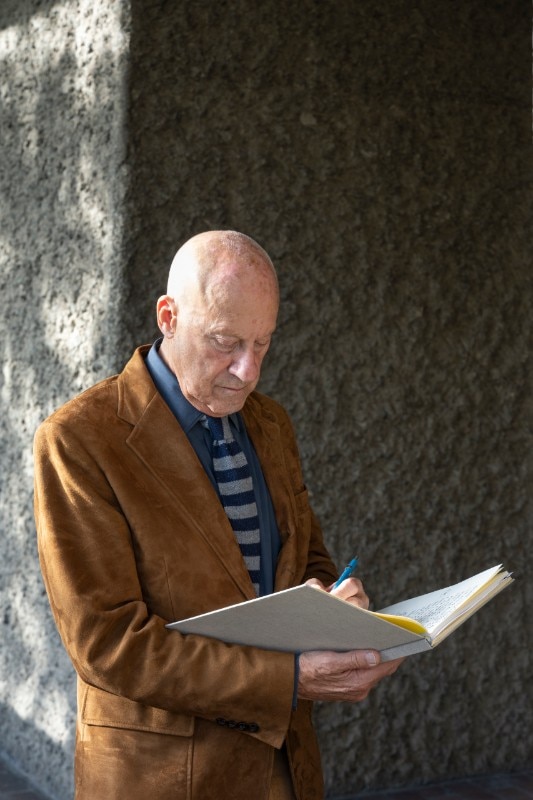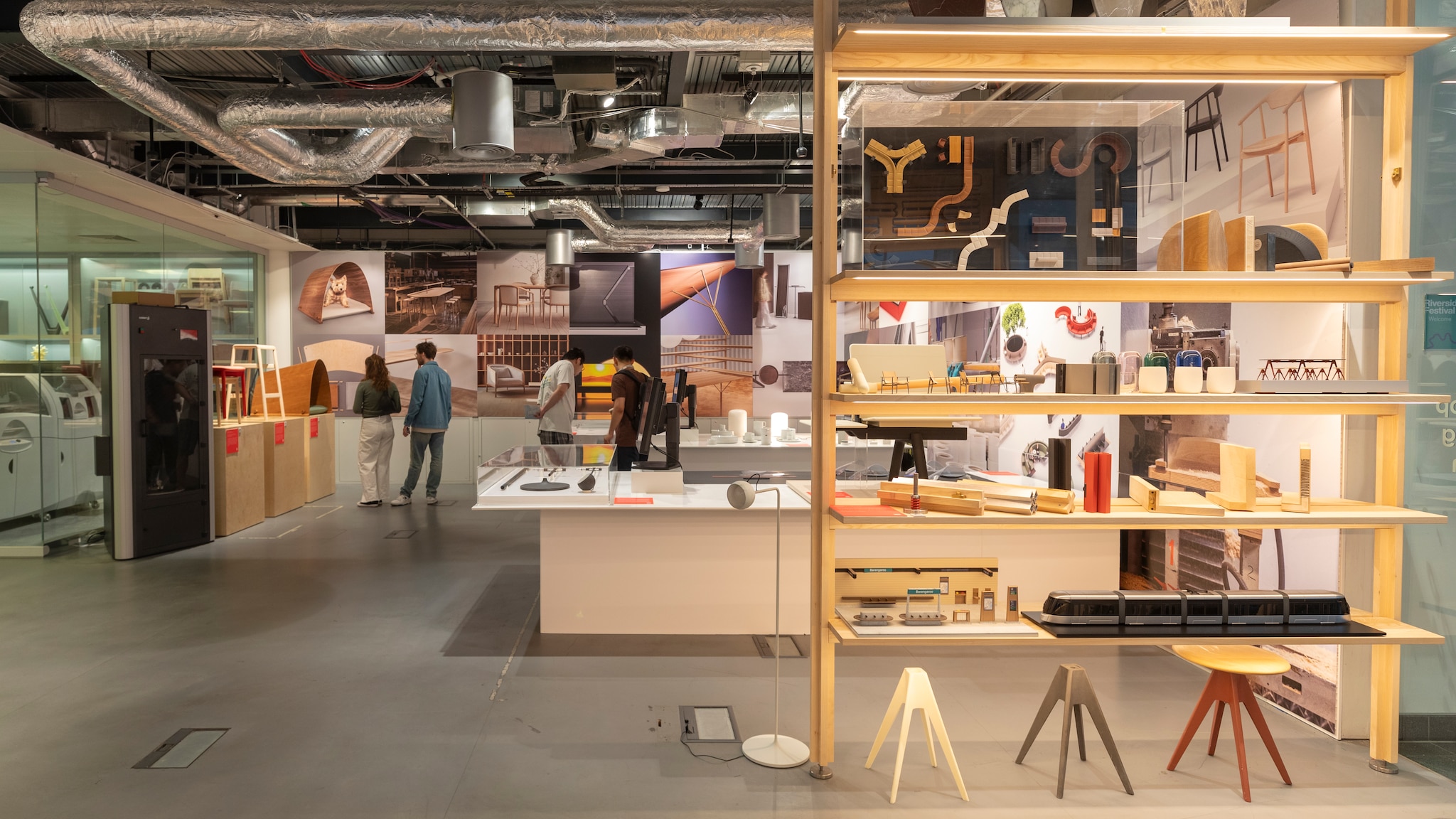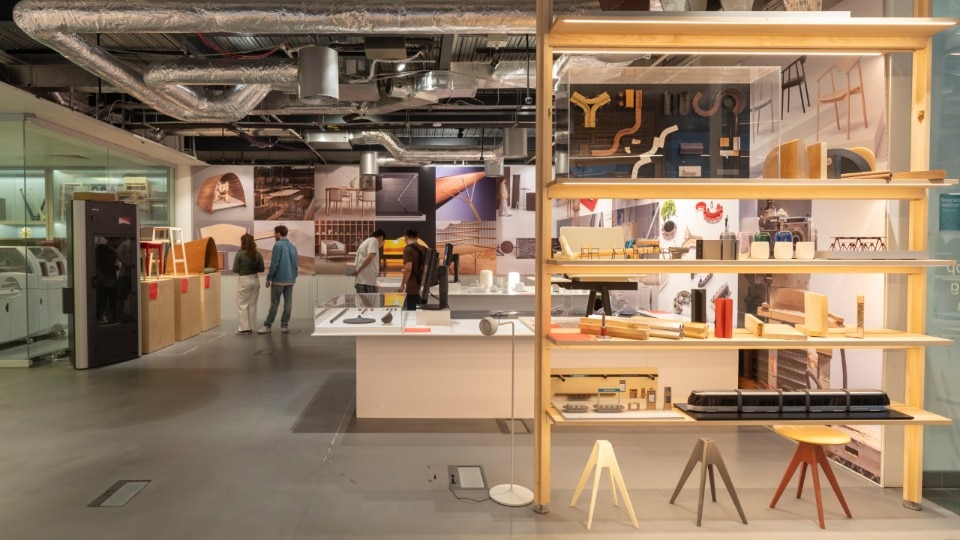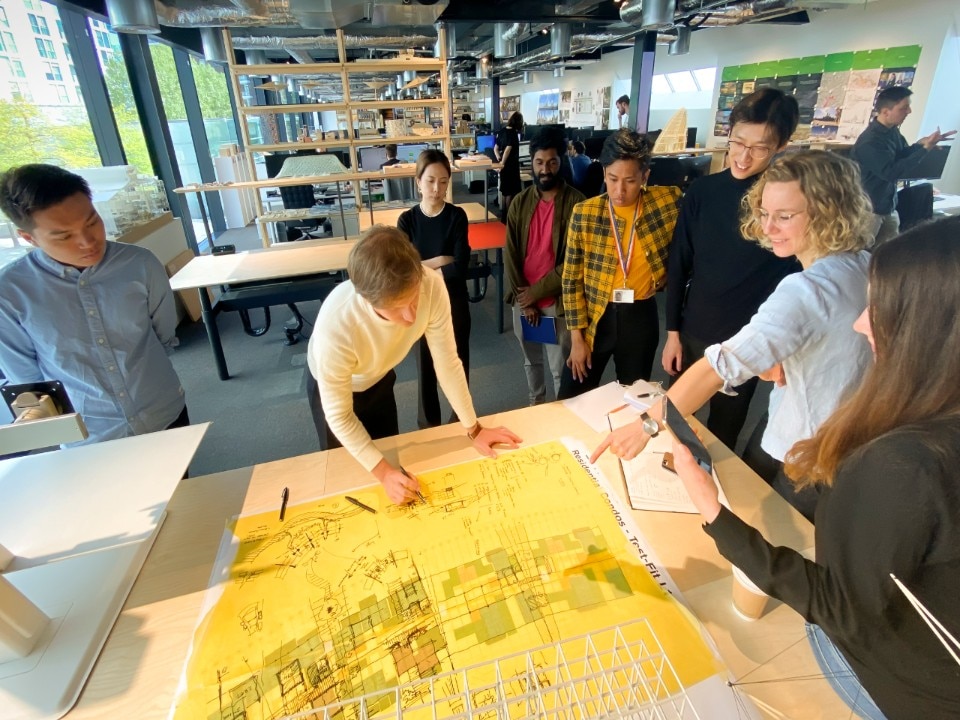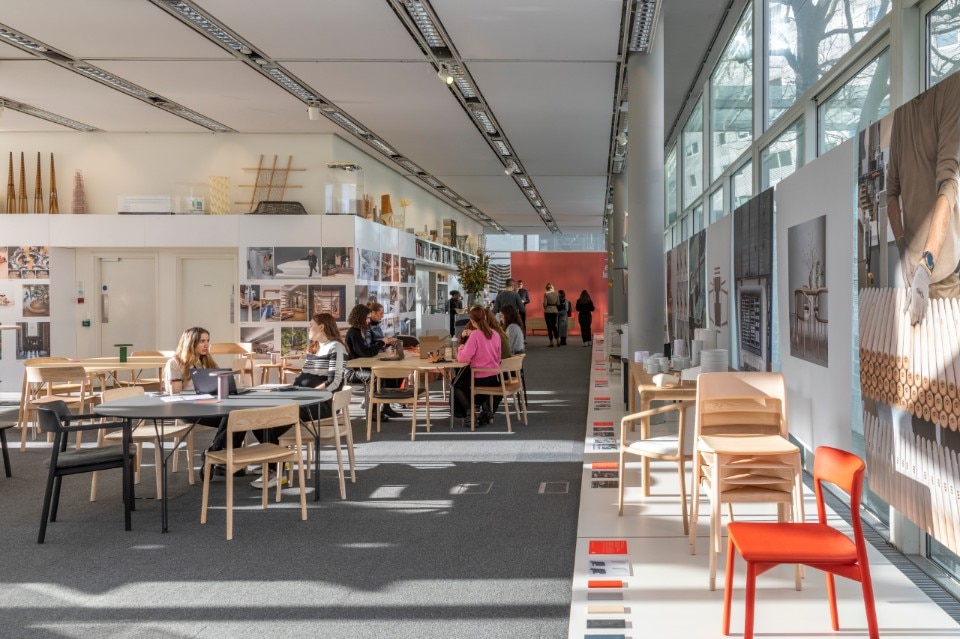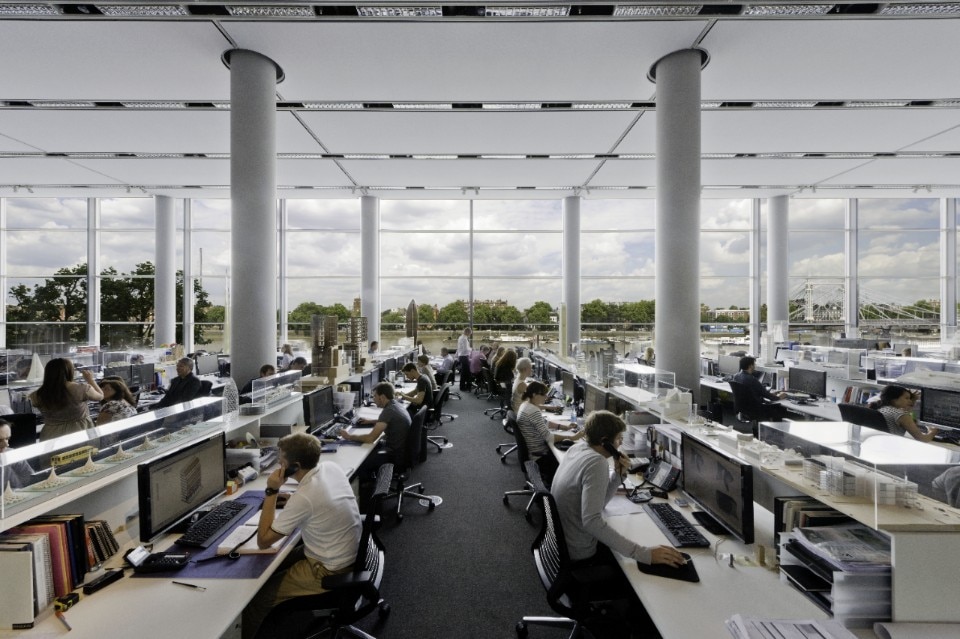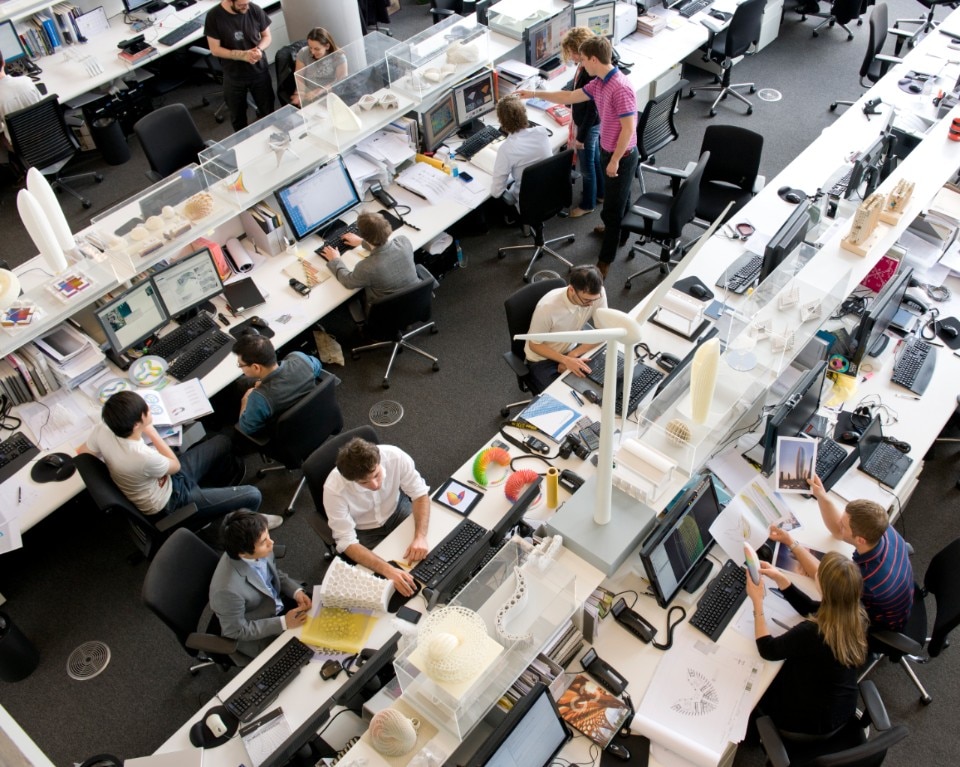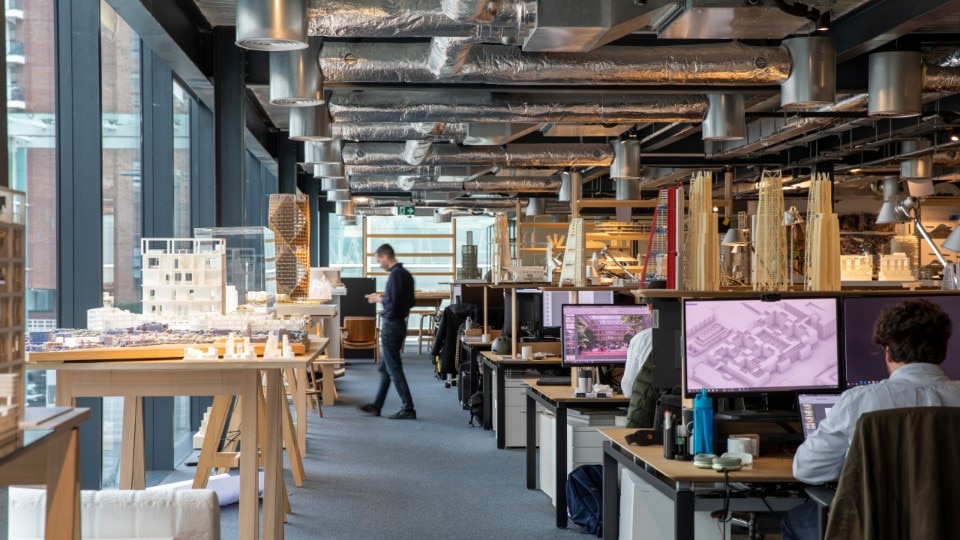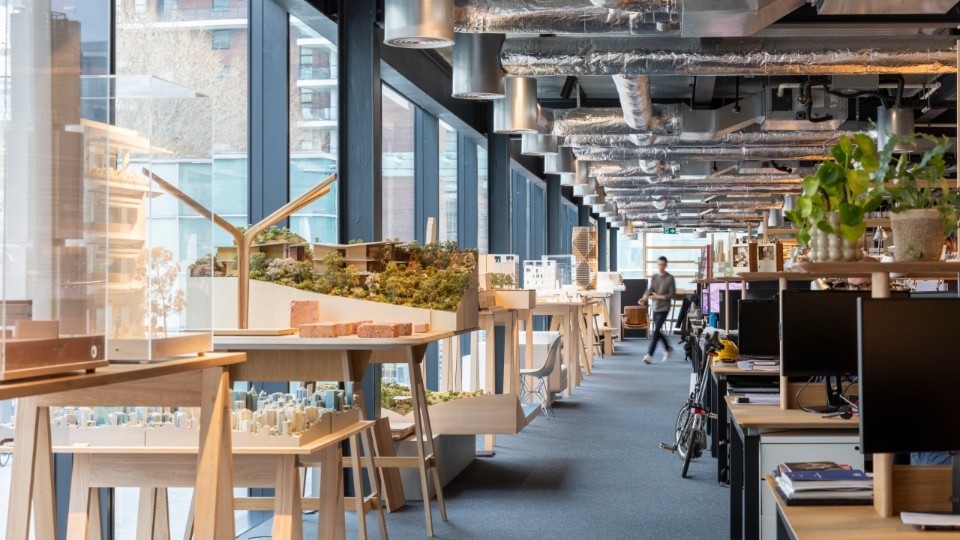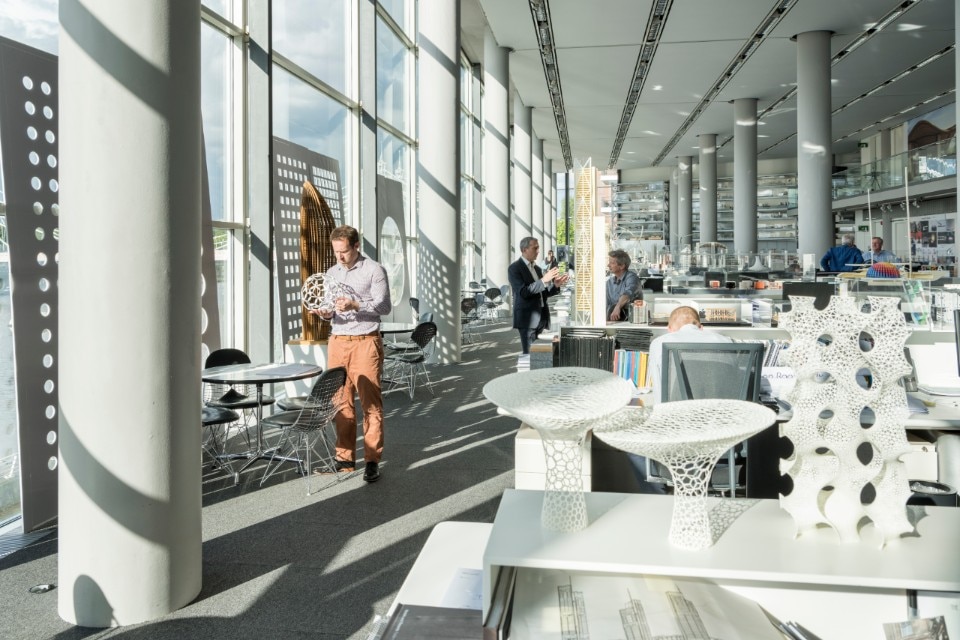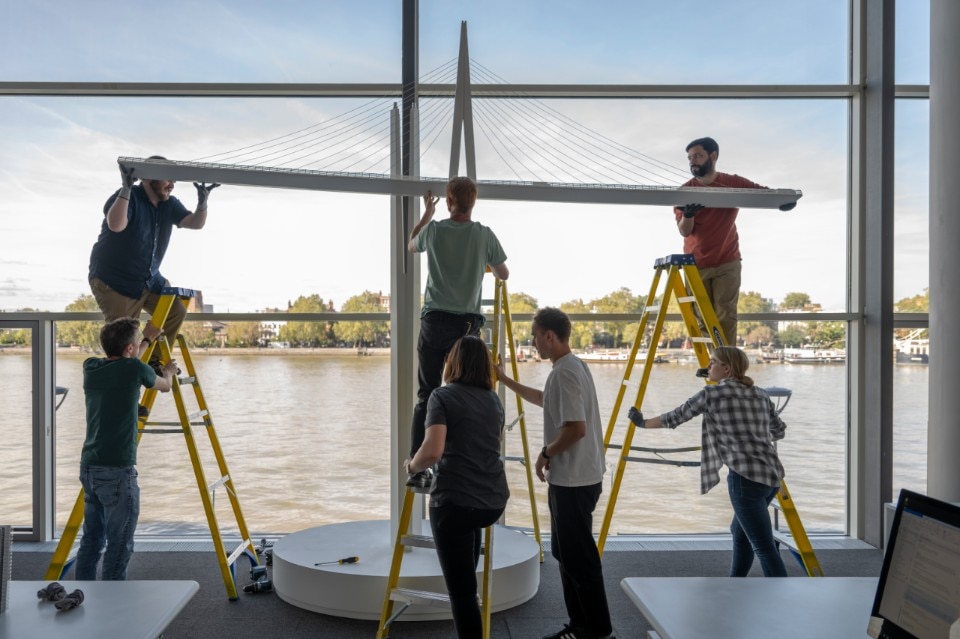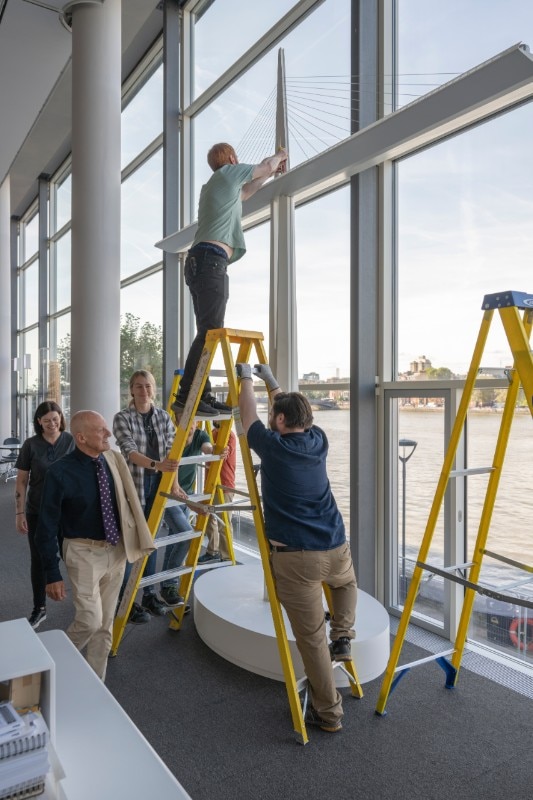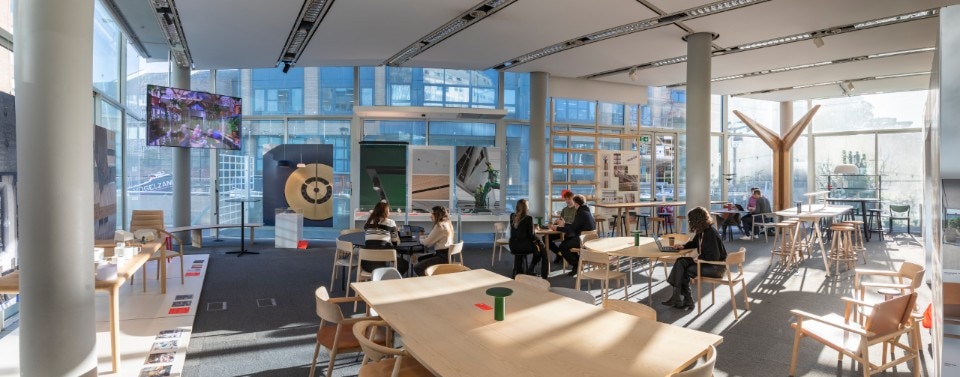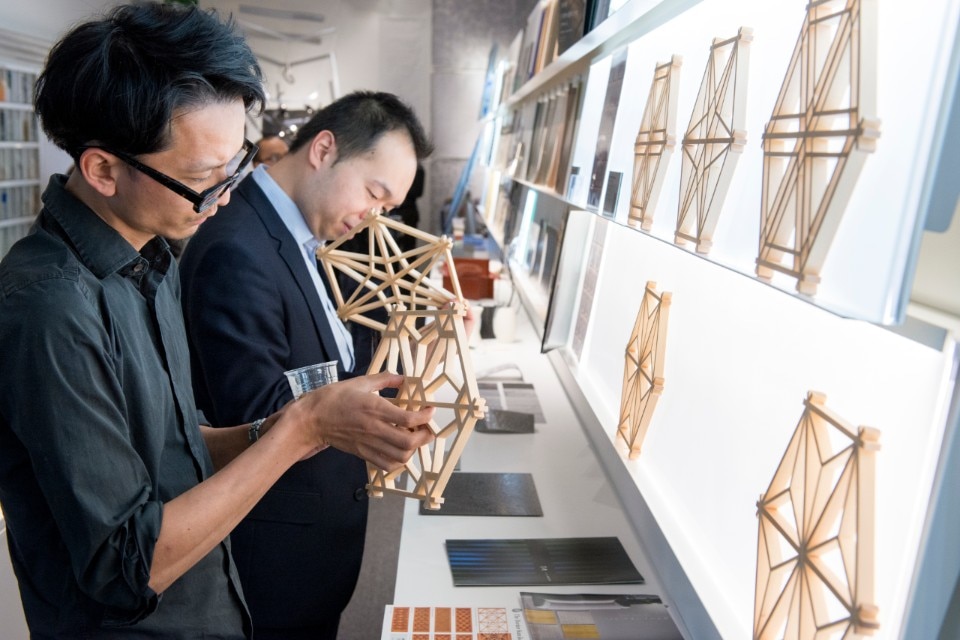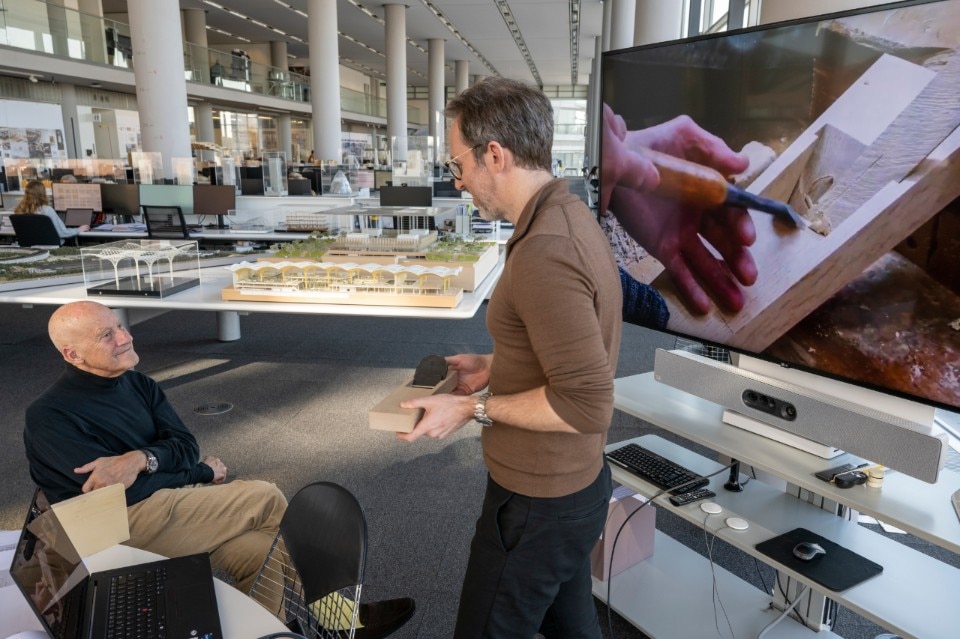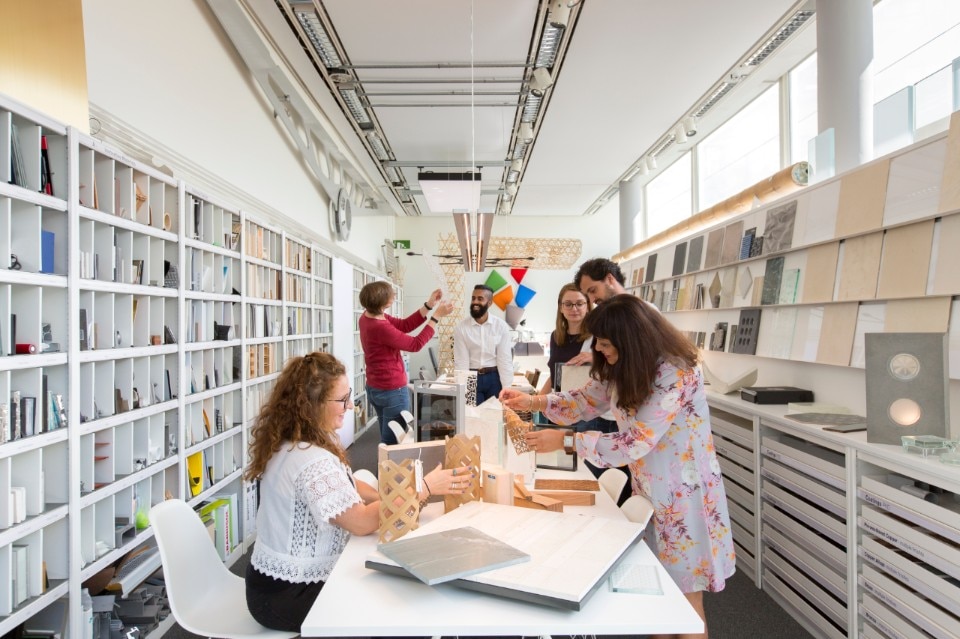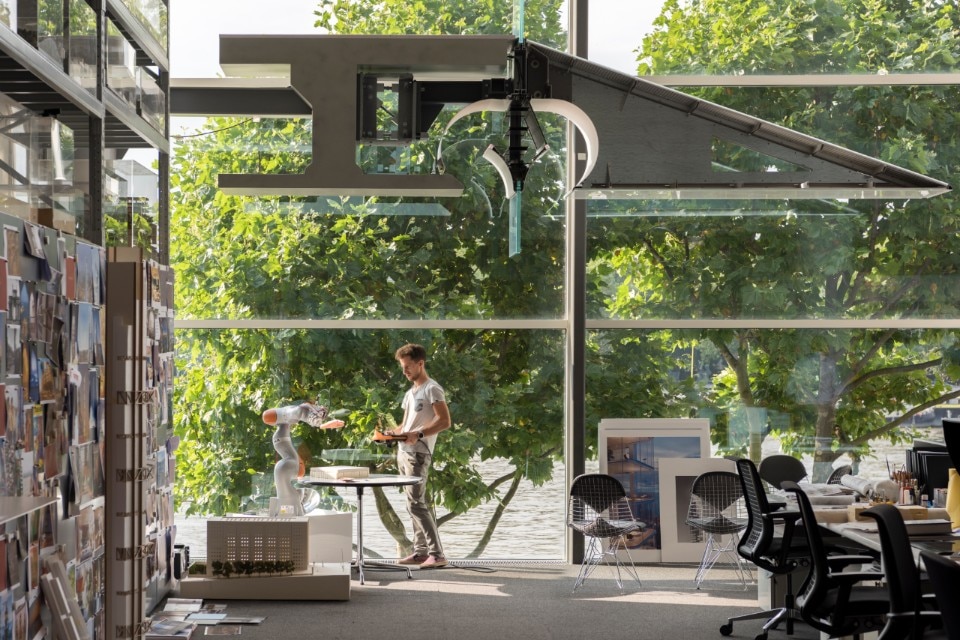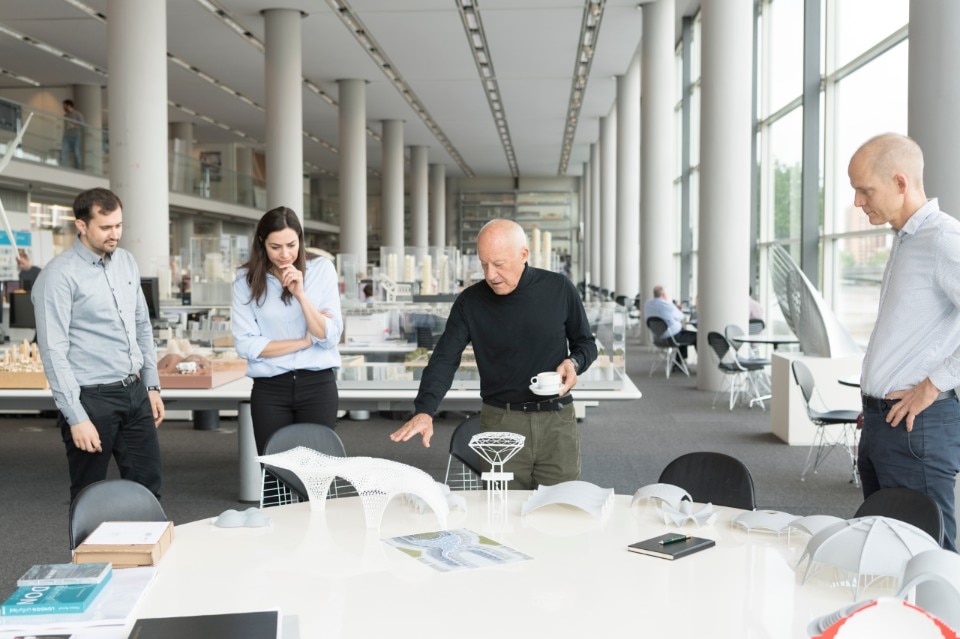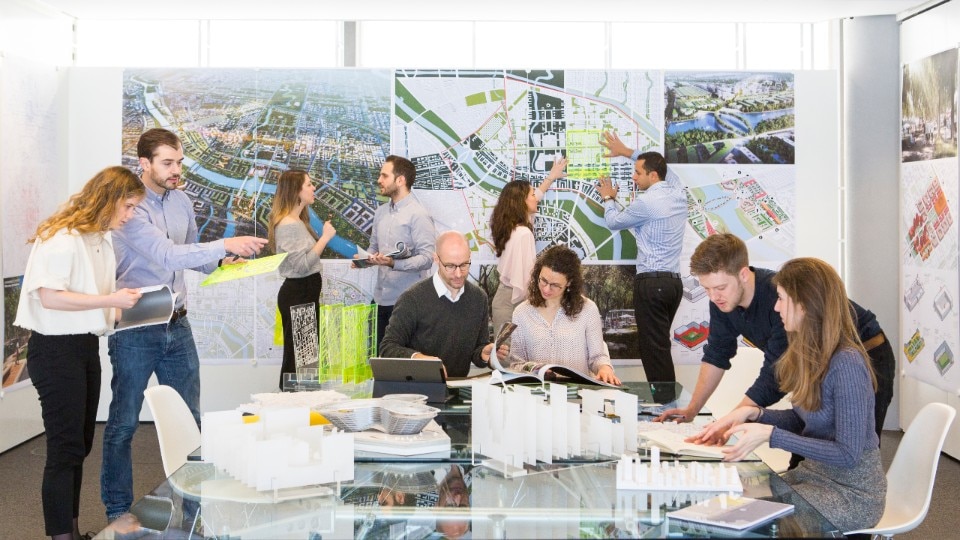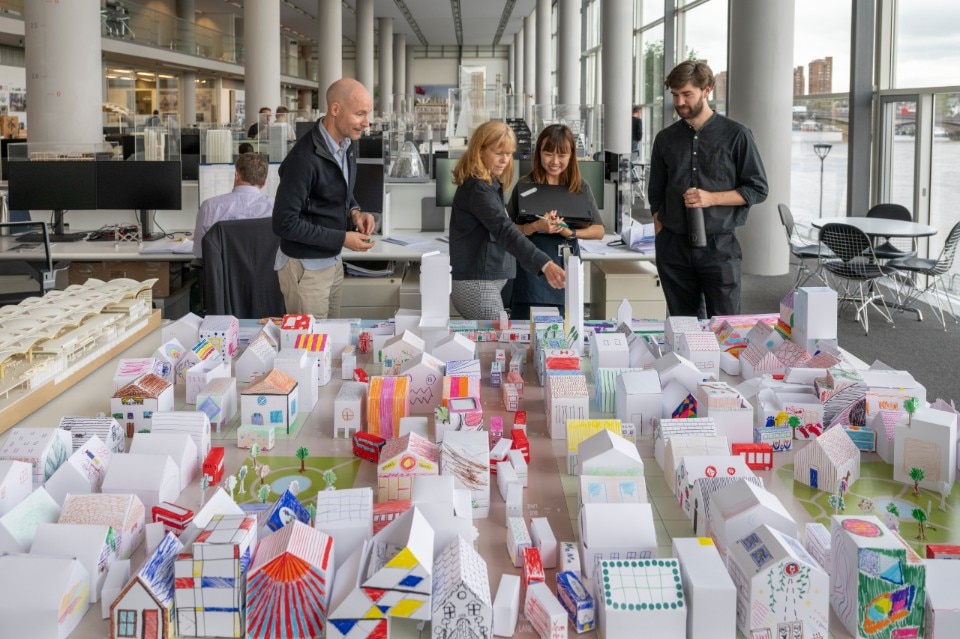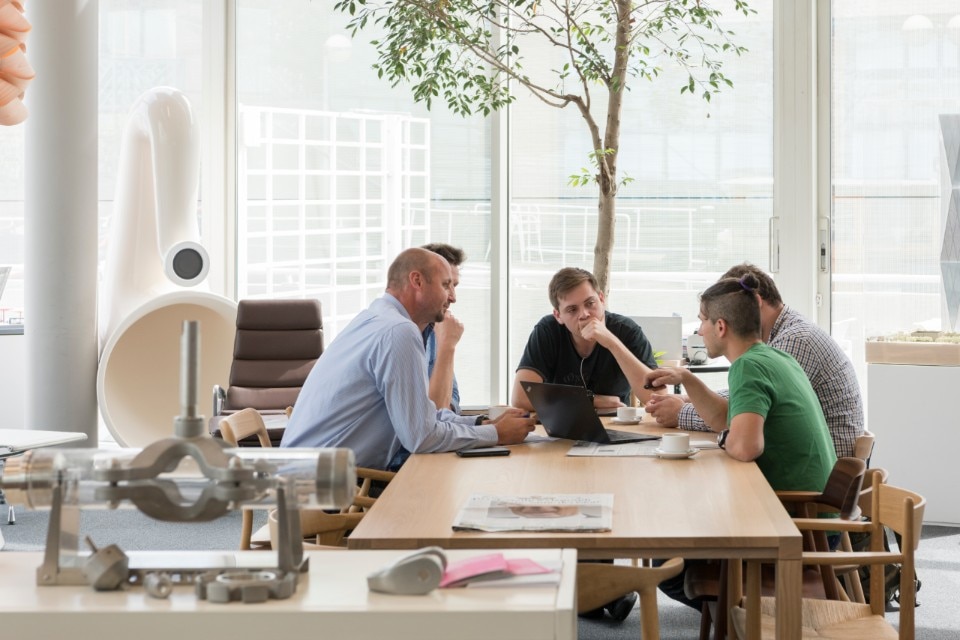On the global architectural scene from the end of the 20th century to today, Norman Foster occupies a place of unique force, enjoying esteem even among the discipline’s greats, who are generally stingy with their consideration. He is primus inter pares, first among equals. There are many reasons for this status, but one seems to stand out. Throughout a career that makes the word extraordinary sound reductive, Foster established many standards taken up by the professional community, only for him to surpass them, time and time again, without ever looking back. Now that he has accepted to become the 2024 guest editor of Domus, the occasion arises to meet the man himself.
Primus inter pares is how the Latins designated people like you. Do you identify with that?
You can’t really put yourself in the position of others. It’s easier to do what you do, and let others judge what that is or isn’t. Otherwise you’re trying to psychoanalyse yourself, which I think is questionable.
Then what do you think of yourself?
All of us, as individuals, do what we do. We challenge, we question, we design, we engage, we communicate, we share. That has its own cycle, its own energy. I’m more interested in the future than trying to analyse the past. I’m more comfortable talking about the future.
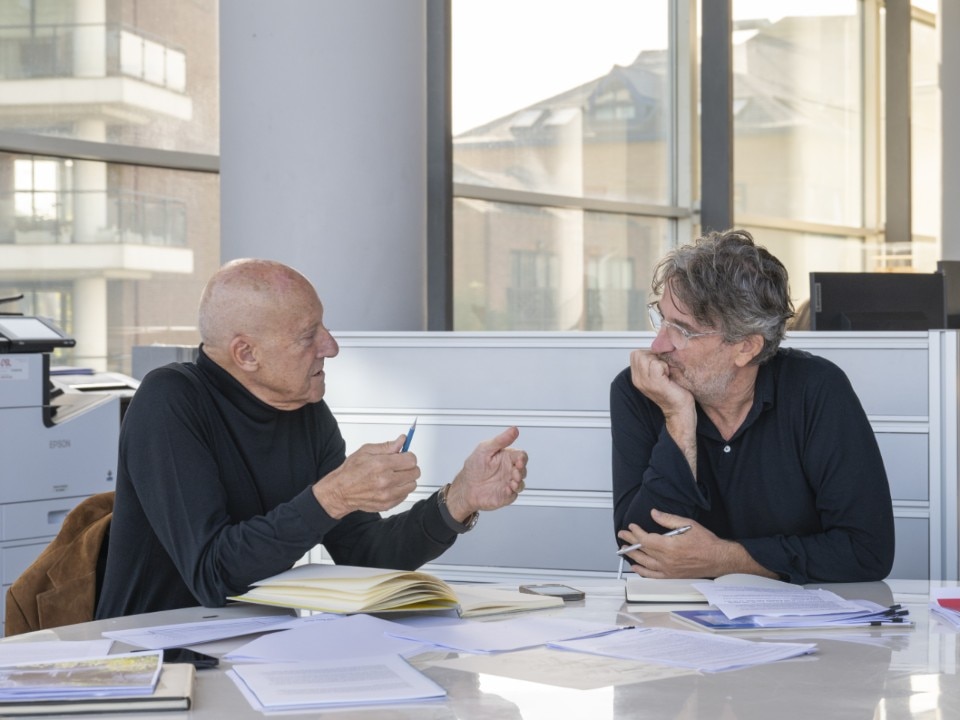
Then let’s think of the future. Architecture today is an opportunity to grow and a privileged key for understanding the world, which is why I am grateful to be working for Domus, as a non-architect. What is architecture today and what will it become?
Architecture is a mirror of our society. My first experience with architecture was the first building I worked in. I wasn’t thinking at the time “this is architecture”, but the building moved me.
How old were you?
I left school at 16 and started working in Manchester town hall. The place was a manifestation of the civic pride of Manchester at the height of the industrial revolution, so it was a celebratory building. You see the same embodiment of civic pride in the airports of Beijing and Hong Kong.
Can we consider buildings without considering the surroundings?
How could we? We cannot separate the building, Manchester town hall, from Albert Square, which fronts it. Curiously, provoked by this Domus article, I’m revisiting the past, and yesterday I went around a major development called the Barbican. The Barbican was a response after World War II to redevelopment. This utopia brings together subsidised housing, public space, water, greenery, culture, concert hall, art galleries and restaurants. That was how this country saw itself in the aftermath of the war. It’s inseparable from its aspirations; it’s a utopian vision of the future. If you want to look far ahead to the future, first look far back to the past.
The state of our cities, the state of our architecture, is the state of our civilisation. The art of building is about the human spirit, about spiritual as well as material needs.
Is this what you’ll be doing with Domus?
Yes, I will be looking to the future. For the magazine, I consciously created something I call “revisits”, which is looking at utopian projects from the past, and seeing how they fit in today. Albany is another utopian vision of a city within a city, built in the 1770s as a community in Piccadilly, London. There is the Unité d’Habitation by Le Corbusier in Marseilles, and Lafayette Park outside Detroit; Siedlung Halen outside Bern, Switzerland; Moshe Safdie’s Habitat in Montreal. All were urbanistic utopian visions of a future.
Most of these examples date back to the same general period.
Except for Albany, yes, interestingly. At their best, architecture and its cities are aspirational; at worst, they reflect some of the decline. So when we see crumbling infrastructure, when we see an inheritance from the past that’s not been respected or renewed, that’s been allowed to rust and decay, that’s a manifestation of our lack of care, our lack of concern. The state of our cities, the state of our architecture, is the state of our civilisation.
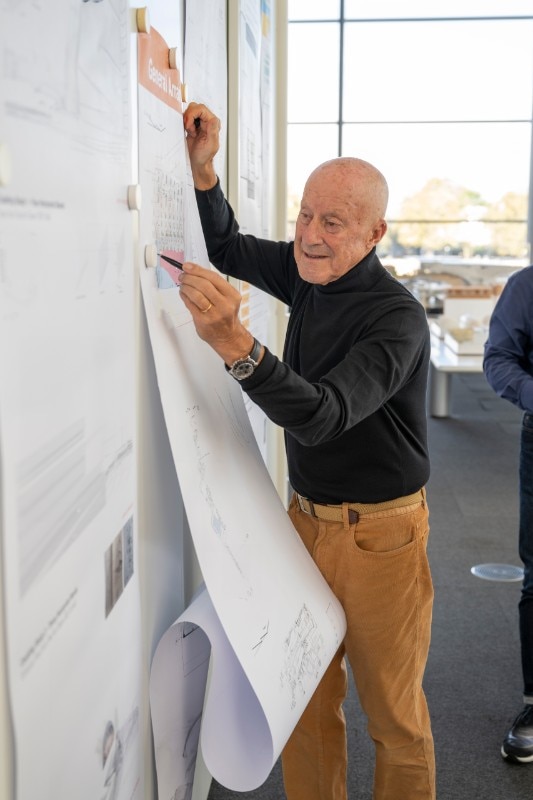
Some consider technology a kind of revenge on architecture, a negative thing.
How can you separate architecture from technology? Architecture at any period in history is a manifestation of that period’s technology, whether it’s a Romanesque church or a Gothic cathedral, they were built using the high technology of that period. The idea that high technology belongs to us today is the ultimate arrogance. Architecture is the embodiment of the building technology of the time, and it’s always stretching the limits.
My first experience with architecture was the first building I worked in, Manchester town hall. I wasn’t thinking at the time ‘this is architecture’, but the building moved me.
There are architects who consider themselves more artist than architect.
Why is it either or? Surely, they’re inseparable.
Not everyone would agree with that.
The art of building is about the human spirit, about spiritual as well as material needs. Shelter may start with the material needs, keeping us warm when it’s cold outside, or cool when it’s hot. Think of the ingenuity of doing that in an age before cheap energy, before the ability to throw a switch. Think of the beauty of desert architecture that by shade, evaporative cooling and layers created welcoming coolness. Art and architecture are totally interwoven. The idea that you can have one without the other is a contradiction.
Over the decades, Domus has demonstrated that they live together.
Exactly. What about architecture, art and design? It’s about blurring the boundaries, recognising the fusion and the commonality between these silos, which should not be silos.
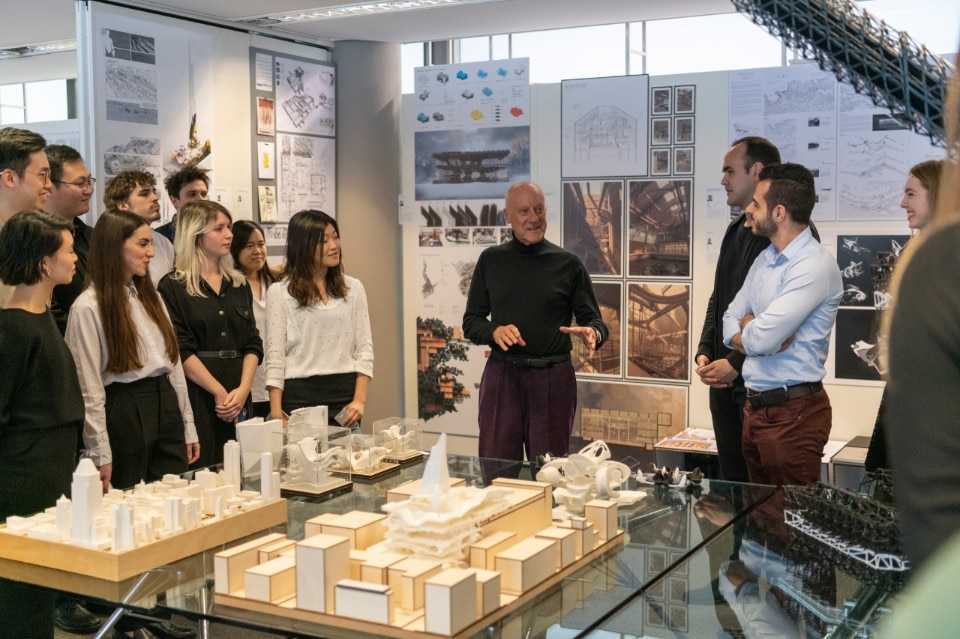
Why are you interested in being the guest editor of Domus?
Good question! My colleague Nigel, who’s capturing our exchange, jokingly said to me, “I thought you might have learned your lesson from Road Rat,” which is a magazine I edited. Domus is an opportunity to explore, research and bring together influences in the form of writers or artists, photographers, who in some way have touched my life for the better, and to share them with a wider audience, with the readership of a magazine that I respect. The magazine was a reference from the earliest days of my practice, when we designed the Reliance Controls building. When I was a student influenced by architecture in Southern California, I looked at the work by Craig Elwood. I can remember the coverage of that in Domus; I can remember seeing inside the building that I couldn’t get inside when I visited it, and seeing the way in which the architect had colour coded the structure and the services, I can almost draw that article from back in the 1960s, so the magazine has been supportive of the designers, artists and architects whose work I respect.
What is the aim of the Norman Foster Foundation?
If we all share a concern for the future, then the future is going to be the decision-makers making the right decision based on the right knowledge and the right awareness. The Foundation is about anticipating the future in terms of civic leaders, those who will be politically, managerially tasked with making key decisions about the environment, about infrastructure, about buildings. It has an educational programme, an institute on sustainable cities, a one-year full-time course of workshops that brings together top graduates from around the world with world-leading mentors, experts on every aspect of civic life, on water, climate change, robotics. So it really goes beyond practice; it’s not something you can do within a practice. As a Foundation, one can, on a project basis, exert an influence.
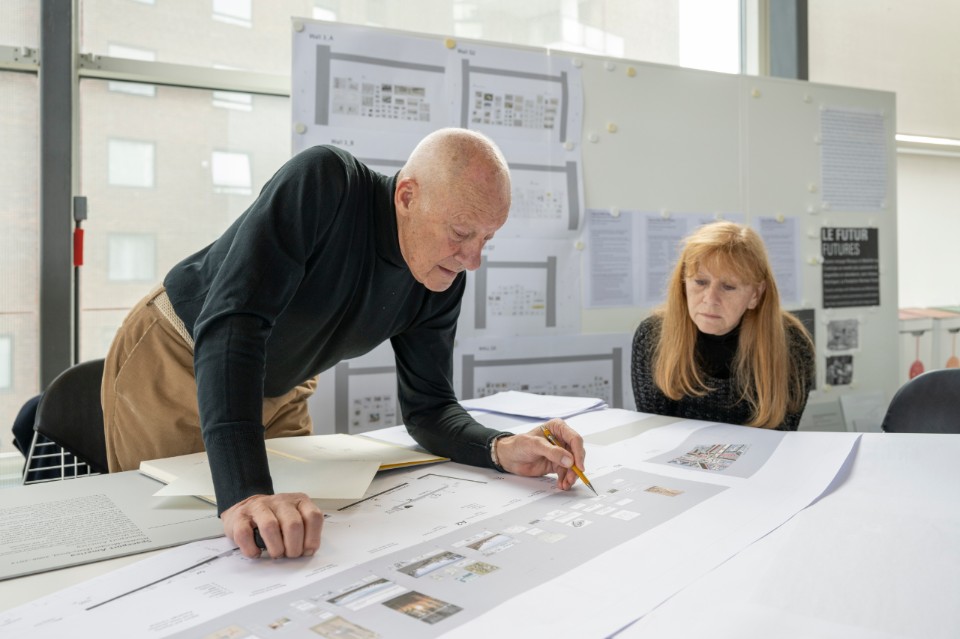
For the 2023 Venice Architecture Biennale, the curator Lesley Lokko framed architecture as being a machine to impose capitalism. You being considered a major representative of capitalistic corporations all over the world, what do you think of her approach?
Our contribution, not to the Biennale proper but to the garden next to the Biennale, during the Biennale, was a project that challenged everything about what is permanent and what is temporary. The Foster Foundation created a response to the refugee crisis.
That was a wonderful project.
It demonstrated that in the space of a few days, you could create something that was permanent, durable and dignifying. It had its birth in a student workshop, in which the students challenged the experts by saying that statistically, a family spends, on average, 17 years in a refugee camp. So the response cannot be a tent, a piece of fabric with maximum 3 years of life. Out of that came this project, and everybody who saw it was saying, “I want one of those, I want to spend the night in it, I’d love one.” This was a philanthropic initiative on the part of the Foundation; it wasn’t a theoretical project. Now, your point about capitalism: it’s an opinion, not a fact. Nearly 18 per cent of humanity lives in China; China is not a capitalist economy, it’s a socialist economy that puts quality of life, arguably, above profit. Life expectancy in China is something like 2.3 years longer than the centre of capitalism in the West. Architecture there is as alive and well, innovative, and as exploring as anywhere on the planet. Take Vienna, where 60 per cent of the housing is state-owned, not privately owned, and it’s rental, yet it’s adventurous, experimental, innovative.
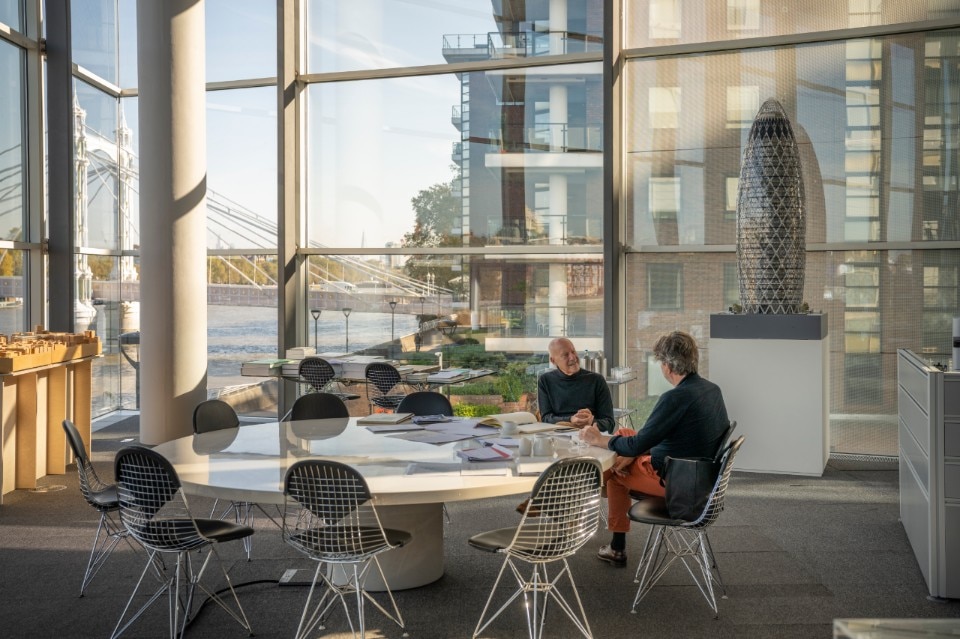
I understand your point.
Take Singapore. Many of the design strategies, particularly planning, are truly progressive and innovative, but they’re not profit-led, they’re not a capitalist manifestation. So all this stuff about architecture being an expression of capitalism is an opinion, that’s not fact.
Are you saying there is a strong connection between architecture and democracy?
Take the Reichstag It’s the very expression of democracy; it is democracy in action. The politicians elected that the design proposition be a manifesto of green energy, so in terms of aquifers, solar panels, biomass, it’s totally green, totally renewable, making it a visual, working manifestation of sustainability. It also symbolically puts the public above the politicians, who are answerable to them, so it’s the very expression of democracy in action.
For all the architects who admire you: Who is Norman Foster?
You’ll have to decide yourself. Who’s Walter? Who’s Norman? There are myriad perceptions, so I think you have to ask a lot of people for a lot of opinions.
I will, and I’ll let you know at the end.
Hopefully you’ll tell me at the end of the series who I am.
All photos courtesy Nigel Young/Foster + Partners


